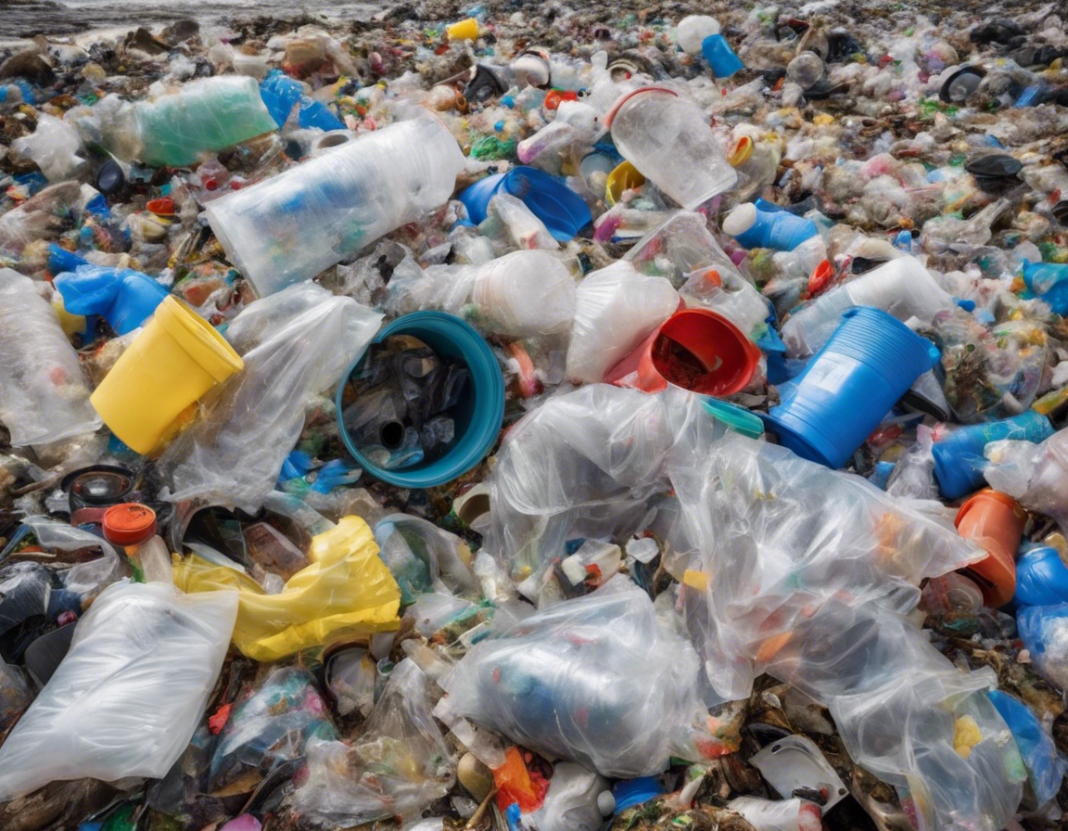Plastic waste has become a haunting nightmare for our planet. It pervades our oceans, landscapes, and even our own bodies. As a concerned environmental advocate, I recently witnessed the devastating consequences of plastic pollution firsthand during a trip to a remote beach. The sheer volume of plastic debris that blanketed the once-pristine shore was a stark reminder of the urgent need for a global shift towards sustainable solutions. In this article, I will delve into the causes, effects, and solutions to the plastic waste crisis that is plaguing our world.
Causes of Plastic Pollution
One of the primary causes of plastic pollution is the exponential increase in single-use plastics. Items like plastic bags, straws, bottles, and packaging are used briefly before being discarded, contributing to the mountains of waste that end up in landfills or the environment. The lack of proper waste management exacerbates this issue, as a significant portion of plastic waste is not disposed of properly and ends up in rivers, oceans, or burned, releasing harmful toxins into the air.
Another major contributor to plastic pollution is the microplastics that are prevalent in many personal care products and synthetic clothing. These tiny plastic particles find their way into water bodies, where they are ingested by marine life and enter the food chain, posing a significant threat to ecosystems and human health. Additionally, the industrial and commercial sectors contribute to plastic pollution through the production and packaging of goods using non-biodegradable materials.
Effects of Plastic Pollution
The effects of plastic pollution are far-reaching and alarming. Marine animals often ingest plastic debris, mistaking it for food, which can lead to internal injuries, blockages, and death. Coral reefs, vital marine ecosystems, are smothered by plastic waste, hindering their growth and resilience. The presence of plastic debris on beaches not only affects the aesthetic appeal but also harms nesting grounds for various species of seabirds and turtles.
On a larger scale, the accumulation of plastic waste in our oceans contributes to the formation of garbage patches like the infamous Great Pacific Garbage Patch, a floating mass of debris spanning an area larger than Texas. This not only affects marine life but also impacts human activities such as fishing and tourism. Furthermore, the toxins released by plastics as they degrade can contaminate soil and water sources, posing risks to human health and biodiversity.
Solutions to Plastic Pollution
Addressing the plastic pollution crisis requires a multi-faceted approach that involves individual action, industry innovation, and policy changes. Reducing the use of single-use plastics and embracing reusable alternatives is a critical step that individuals can take to minimize their plastic footprint. This includes bringing your own shopping bags, water bottles, and containers, as well as avoiding products with excessive packaging.
On a broader scale, industries must rethink their production and packaging processes to minimize the use of plastic and prioritize recyclable and biodegradable materials. This may involve investing in research and development of sustainable alternatives and circular economy models that promote reusing and recycling resources. Innovations such as compostable packaging, bioplastics, and recycling technologies show promise in reducing the environmental impact of plastic waste.
Implementing effective waste management practices is crucial in preventing plastic pollution from entering our environment. This includes improving waste collection, recycling infrastructure, and waste treatment facilities to ensure that plastic waste is properly handled and disposal is controlled. Education and awareness campaigns can also empower communities to take action and support sustainable waste management practices.
Frequently Asked Questions (FAQs)
-
Q: What are the most common types of single-use plastics contributing to plastic pollution?
A: Some common single-use plastics include plastic bags, straws, water bottles, food packaging, and disposable utensils. -
Q: How long does it take for plastic to decompose?
A: Plastic can take hundreds to thousands of years to decompose, depending on the type of plastic and environmental conditions. -
Q: Can plastic pollution be cleaned up from oceans and beaches?
A: While cleanup efforts like beach cleanups and ocean plastic collection systems exist, prevention and reduction of plastic use are key to addressing the root cause of plastic pollution. -
Q: How does plastic pollution impact human health?
A: Plastic pollution can impact human health through the ingestion of microplastics in food and water, as well as exposure to toxic chemicals released by plastics. -
Q: Are there international agreements or initiatives to combat plastic pollution?
A: Yes, initiatives like the United Nations’ Clean Seas campaign and the Ocean Cleanup project are working to raise awareness and develop solutions to combat plastic pollution on a global scale. -
Q: What role can governments play in reducing plastic pollution?
A: Governments can implement policies such as plastic bans, recycling incentives, extended producer responsibility programs, and investment in waste management infrastructure to address plastic pollution.
In conclusion, the plastic waste nightmare that we are facing requires urgent and collective action from individuals, industries, and governments worldwide. By reducing our reliance on plastic, adopting sustainable practices, and advocating for policy changes, we can work towards a cleaner, healthier, and more sustainable planet for future generations. It is imperative that we confront the plastic pollution crisis with determination and innovation to secure a brighter future for all.
